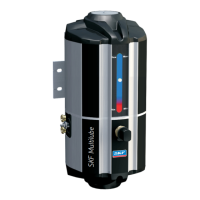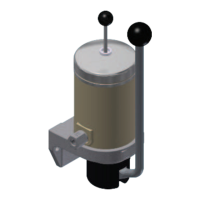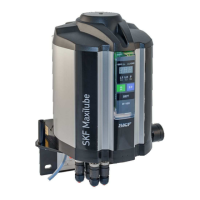58
3. Loosen screws on both sides of the motor's cover cap using a
screwdriver
4. Carefully lift the cover cap and put it aside
5. Push in the bayonet closure (Fig. 95/ 1) of the fuse housing
and loosen it counterclockwise
6. Replace the defective fuse (Fig. 95/2) with a new fuse of the
same type
7. Push the bayonet closure (Fig. 95/1) of the fuse housing into
the fuse box and turn it clockwise to seal
8. Apply the cover cap and tighten both screws
9. Connect the gear pump unit to the power supply
10. Switch on the gear pump unit
11. Conduct a functional test
11.3 Commissioning, product, and system malfunctions
Fault analysis and rectification:
Motor fails to start when the
operating voltage is switched on
No operating voltage on motor
• Check the power supply connection
•
Check the power supply plug/cable and
connect properly if necessary
Check the operating voltage on the motor
Check the fuse
• Check the motor circuit breaker
• Measure the motor current. If current is too
high:
– Remove the pump, crank it by hand:
If resistance is high, replace the pump
• Measure the motor current. If current is too
high:
– Remove the pump, crank it by hand:
If resistance is high, replace the pump
Motor runs with difficulty and at a low
speed
• Measure the motor current. If current is too
high:
– Remove the pump, crank it by hand:
If resistance is high, replace the pump
Motor runs with difficulty and at a low
speed
• Measure the motor current. If current is too
high:
– Dismantle motor, crank by hand:
If resistance is high, replace the pump
Impermissible lubricant (see technical data)
• Remove the lubricant from the entire system
and dispose of lubricant properly; fill system
Pressure too high, pressure limiting valve
is jammed or defective
• Check the pressure limiting valve and replace if
necessary
Motor runs with difficulty and at a low
speed
Ambient temperature too low (see technical
data)
Increase ambient temperature
